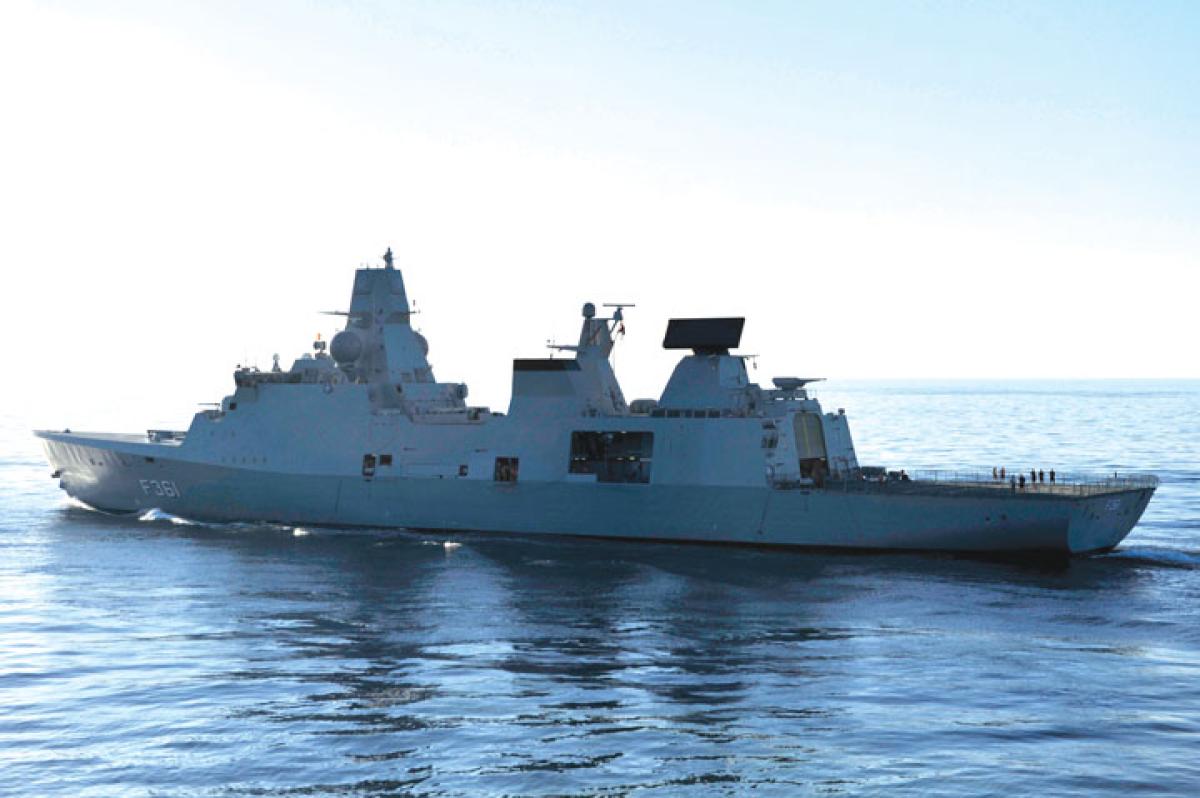The Littoral Combat Ship is overpriced and underperforming, yet the Navy continues to support it. It’s time to abandon the LCS and replace it with a comparable vessel that costs the same, but is far more capable. There are several great candidates in other navies, but one we might consider is the Danish-built Iver Huitfeldt–class frigate.
Let’s compare the U.S.-built LCS with the Huitfeldt.
First, the cost: The Navy estimates the price of the LCS at $480 million a copy, with another $100 million each for a mission module. The DOD Selected Acquisition Report puts the LCS at $680 million a ship.1 By comparison, the Danish Navy recently built three Iver Huitfeldt–class frigates for $332 million each, not counting weapons.2 Even if installing weapons doubles the cost of each hull, as the rule of thumb goes, a Huitfeldt would still cost about the same as an LCS.
The basic LCS platform has a BAE 57-mm gun and a 21-cell RIM-116 surface-to-air missile system. The maximum effective range of both weapons is less than 10 kilometers, and the proposed modules do not add a great deal of capability. Moreover, the Navy has decided to cut its purchases of modules to 64 for the 55 planned LCSs. So essentially each ship will be single-mission.
The antisurface-warfare module (ASUW) has two 30-mm MK-46 guns with a maximum range of 2.2 kilometers, and two 11-meter small boats and a Griffin missile system with a maximum range of 5 kilometers, and a warhead of 5.9 kilograms.3 Thus, even with the ASUW module, the LCS will have a surface engagement range of less than 10 kilometers.
The minesweeping module will provide the LCS with a capability similar to today’s minesweepers. The wisdom of employing a $600-million ship capable of 40 knots as a minesweeper remains unclear.
The antisubmarine-warfare module adds two H-60 helicopters or four MQ-8B helicopter drones, or a mix.4 In addition, the ASW module now consists of the VDS (variable depth), the MFA (mid-frequency active), and lightweight tow (sonars), a torpedo decoy.5
In comparison, a Huitfeldt carries 16 Harpoon missiles, with a range of 124 kilometers, and a warhead of 227 kilograms. It also has two 76-mm guns that reach 16 kilometers. One of the 76-mm guns can be replaced with the U.S. 127-mm gun, which has a range of 24 kilometers. For close-in defense, each ship also has a 35-mm Oerlikon Close-In Weapons System and four 12.7-mm machine guns or two 20-mm cannon.
For air defense, each Huitfeldt has 32 standard SM-2 missiles with a range of 167 kilometers in a Mark 41 VLS launcher. This system is backed up by 24 Evolved Sea Sparrow RIM 162B anti aircraft missiles with a range of 16 kilometers and four Stinger missiles.
For ASW, each Huitfeldt carries two twin-torpedo tubes for the Eurotorp MU 90 active-passive homing torpedoes with a range of 15 kilometers. Like the LCS, the Huitfeldt has a hangar that can house two light helicopters or a mix of helos and drones.
The Huitfeldt can sail 9,000 nautical miles at 15 knots, compared to the LCS’s 3,500 nautical miles at 14 knots. Crew sizes are similar.
In short, today’s Huitfeldt outclasses all three versions of the 2017 LCS in every category. The Danish ships provide vastly superior antiaircraft, long-range strike, and ASUW capability, while also providing equivalent ASW capability and the flexibility inherent in 65 additional billeting spaces.
It’s time to cancel the LCS program and build ships of comparable cost and capability to those of our European allies. If Denmark can figure it out, the U.S. Navy can, too.
1. Department of Defense, Selected Acquisition Report, LCS, as of 31 December 2011, 12.
2. Johanna Janis Lok, “Danish Modern: Commercial Shipbuilding Strategy Cut Costs of Frigate,” Defense Technology International, Jun-Jul 2008, 28–29, www.nxtbook.com/nxtbooks/aw/dti0708/index.php?startid=28.
3. Department of Defense, Selected Acquisition Report, LCS, 110.
4. John Sayen, “The Navy’s New Class of Warships: Big Bucks, Little Bang,” 5 October 2012, http://nation.time.com/2012/10/05/the-navys-new-class-of-warships-big-bucks-little-bang.
5. Ronald O’Rourke, “Navy Littoral Combat Ship: Background and Issues for Congress,” Congressional Research Service, 10 August 2012, 13.




